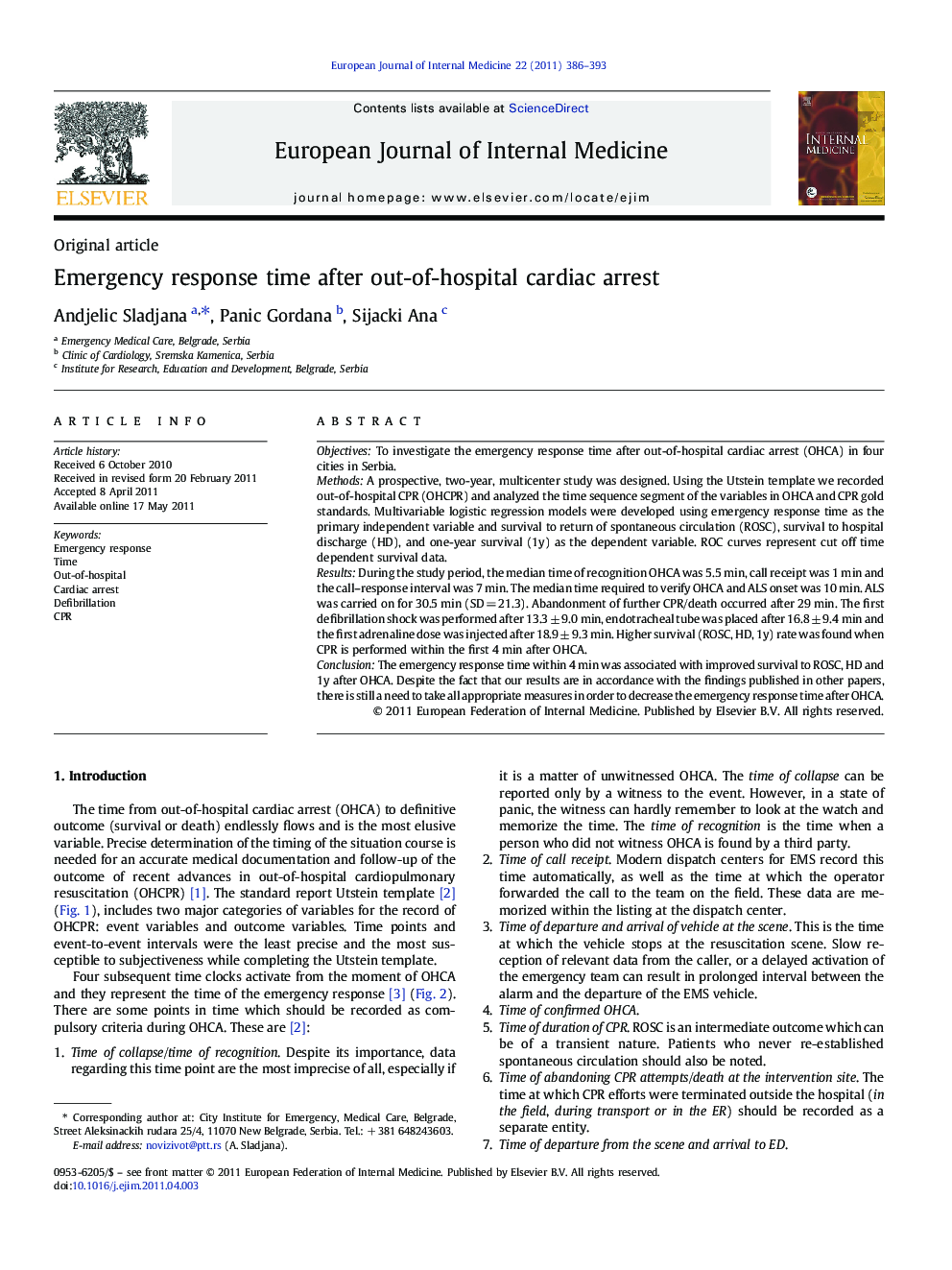| Article ID | Journal | Published Year | Pages | File Type |
|---|---|---|---|---|
| 3467466 | European Journal of Internal Medicine | 2011 | 8 Pages |
ObjectivesTo investigate the emergency response time after out-of-hospital cardiac arrest (OHCA) in four cities in Serbia.MethodsA prospective, two-year, multicenter study was designed. Using the Utstein template we recorded out-of-hospital CPR (OHCPR) and analyzed the time sequence segment of the variables in OHCA and CPR gold standards. Multivariable logistic regression models were developed using emergency response time as the primary independent variable and survival to return of spontaneous circulation (ROSC), survival to hospital discharge (HD), and one-year survival (1y) as the dependent variable. ROC curves represent cut off time dependent survival data.ResultsDuring the study period, the median time of recognition OHCA was 5.5 min, call receipt was 1 min and the call–response interval was 7 min. The median time required to verify OHCA and ALS onset was 10 min. ALS was carried on for 30.5 min (SD = 21.3). Abandonment of further CPR/death occurred after 29 min. The first defibrillation shock was performed after 13.3 ± 9.0 min, endotracheal tube was placed after 16.8 ± 9.4 min and the first adrenaline dose was injected after 18.9 ± 9.3 min. Higher survival (ROSC, HD, 1y) rate was found when CPR is performed within the first 4 min after OHCA.ConclusionThe emergency response time within 4 min was associated with improved survival to ROSC, HD and 1y after OHCA. Despite the fact that our results are in accordance with the findings published in other papers, there is still a need to take all appropriate measures in order to decrease the emergency response time after OHCA.
